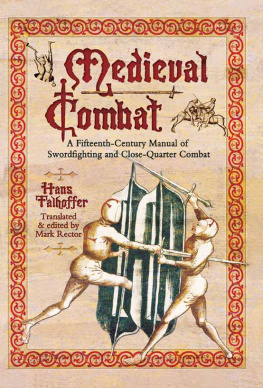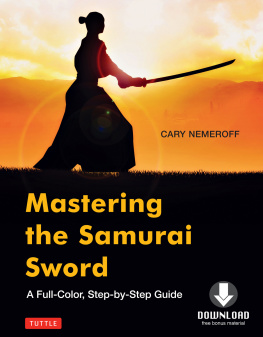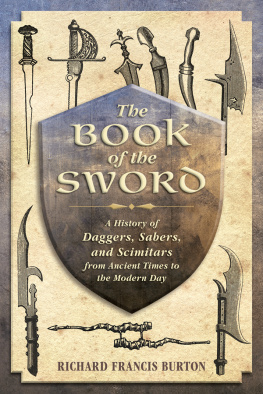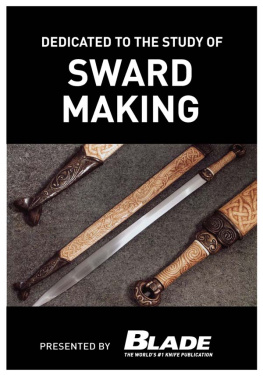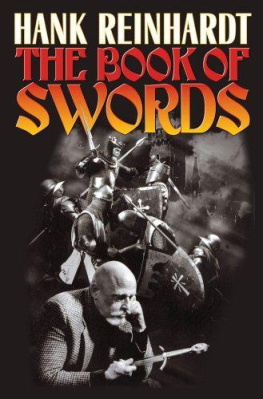Sword Skills
Movements and Cutting Patterns
For the Blade Fighter
By
Chuck Callaway
Copyright 2021 Chuck Callaway
Cover and illustrations by Chuck Callaway
Photographs and technical assistance by
Bryan Callaway and Conner Callaway
All rights reserved.
ISBN: 9798452688570
Disclaimer and Warning
The martial arts and self-defense involve the use of fighting skills and techniques designed to cause injury to an attacker. The practice and use of these skills can be dangerous and physically demanding. The improper use of any weapon or fighting technique could result in both criminal and civil action against the person responsible. Readers should be aware of the laws in their place of residency before practicing any of the techniques described in this book. The information provided in this book is for informational and entertainment purposes only. The author and publisher are not responsible and assume no liability for any injury, damage, or legal proceedings that might result from the practice, use, or misuse, of the information contained in this book. One should always consult a physician before engaging in any physical activity. Proceed at your own risk.
Contents
Dedication
This book is dedicated to the great warriors of the past who courageously faced their enemies and clashed steel on the battlefield. Warriors who knew that every time they lifted
their blade it was truly a matter of life or death.
For no one-no one in this world can you trust.
Not men, not women, not beasts. [Points to sword]
This you can trust!
- Conans father
Conan the Barbarian
Introduction
I have always had a fascination with the sword. I remember as a young boy using my fathers metal grinder to put a sharp edge on a piece of steel I found in our barn. I then wrapped the handle with leather strips to form a crude sword. I carried my homemade sword around with me on many adventures that included snake hunting and looking for large rats that were abundant along the railroad tracks at the granary near my home. Although I swung my homemade sword with the rage of a Viking, the giant rats usually escaped the wrath of my blade unharmed.
As I grew older, my thirst for sword knowledge grew as well. I read every book I could find on sword fighting and was very intrigued by the Japanese katana. Eventually I bought a cheap samurai sword replica at a local pawn shop. It was dull so I quickly put my fathers metal grinder back to use and gave it a sharpened edge. Although I had not yet received any formal sword training at this point in my life, I read many books on the subject and practiced drawing and cutting daily. As a kid growing up in the country there was never a shortage of sword targets to practice on. I chopped down many corn stalks and milk weeds with that sword.
My quest for knowledge soon expanded to European sword fighting methods. In 1982, the movie Conan the Barbarian was released, and I probably watched it over a hundred times and studied closely the sword movements contained in the movies battle scenes. It was around this time that I read a magazine article that talked about how a Japanese sword master had trained Arnold Schwarzenegger for the movie. I remember thinking at the time that it was odd that Japanese katana techniques would be used to represent the broad sword movements employed by Conan. Then the light bulb went off in my head and I realized that regardless of the sword style and differences in techniques, the underlining principles are really the same. There are only so many ways to slash and stab an adversary with the sword.
In the late seventies I began my formal training in the martial arts and over the last forty-two years I have studied several different sword fighting methods including the Aikido bokken, various Filipino martial arts systems, and European fencing. My training and continued studies have re-enforced my belief that all sword fighting systems contain more similarities than differences.
Most of the major differences between the sword arts are a result of adaptations that have been made due to the size and weight of the weapon or the type of clothing and protective armor worn by the practitioners. The true key to proficiency with the sword is knowledge and understanding of the basic underlying principles of bladed combat. Once these principles are understood, they can be effectively applied regardless of the type of weapon, or the style that is being used.
In the more than four decades that I have studied martial arts I have found that certain movements and patterns with the sword are universal and can be applied equally to any type of weapon. These same movements and principles can easily be adapted from a short one-handed sword to a long two-handed blade with only slight modifications by the practitioner.
In my own practice sessions, I would find myself using a technique I was taught in Arnis with my katana or flowing into a fencing movement while training with a machete. Eventually my training with the sword evolved to the point where I was focusing more on core movements and not thinking in terms of specific types of swords or stylistic differences. These core movements became the common denominator that linked all of my sword practice together into one efficient system of blade combat.
My goal in writing this book is to share with you some of the core movements and cutting patterns I have used over the years. I believe these movements and patterns when seriously studied will enhance your sword fighting skills. Although these patterns and movements are simple, they are based on practical combat techniques and have real fighting applications that we will explore as well. Once the movements and patterns are learned, they can be combined into almost limitless combinations of techniques. So, without further ado, grab your sword and lets get started!
Chuck Callaway
July 2021
Key Concepts
This book is not intended to teach you a certain style or form of sword fighting but rather to provide you with core movements and cutting patterns that I have used extensively over the years to enhance my own personal sword fighting system. Because of this, I will assume that you have at least a basic familiarity with some type of sword combat method.
Based on this assumption, this book will not cover basic sword topics such as footwork, guards, targets, or tactics, unless they are directly related to the descriptions of the movements or cutting patterns. If you do not currently study some form of combat with the blade, there are many great books on specific styles of sword fighting available.
This book should be thought of as a resource of practical movements and techniques that will supplement any system. In fact, I will go so far as to say that if you master the concepts in this book, they will liberate you from your current style and give you the skills necessary to give any sword practitioner a run for their money in a sparring match.
Even though this book is not intended to be a standard sword instructional manual, there are some key concepts that we need to discuss before we get started with learning the core movements and cutting patterns. To get the best results from your training, you should incorporate all of these concepts into your daily practice.
Combat Mindset
Every time that you perform the movements and cutting patterns, you must do so with a combat mind set. Dont just blindly go through the motions and swing your sword around like a mindless zombie. Instead, pay close attention to each movement and recognize the practical application of what you are doing. Stay relaxed and focused but execute each movement with power speed, and precision as if you were engaging an actual opponent in combat. Although the movements and cutting patterns will look impressive when executed in a fluid manner, they are not intended to be a dance. They are combat movements and must be practiced with a mindset that you are actually fighting an enemy .





